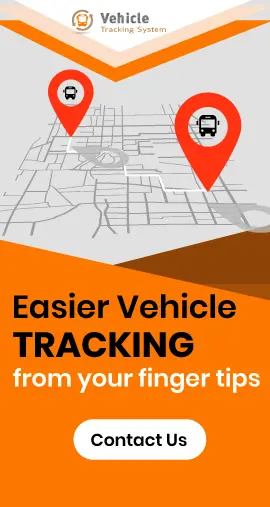GPS Technology Evolution and Where We Stand Now
April 27th, 2018
Are you lost hopelessly on the street searching for your friend’s newly constructed house?
If yes, this was a usual scene with almost all of us until a few years back.
Although we discussed the route to the friend’s house multiple times over the phone, we still lost in the streets and lanes.
But not now!
Thanks to the evolution of GPS technology which has empowered humankind to reach the remotest of locations with ease and accuracy.
GPS – which means Global Positioning System, was introduced to the public in 1995 and ever since, it has impacted the lives of people in numerous ways.
At present, a large number of people rely on GPS technology to reach places, and to explore new destinations.
The technology acts as a helpful guide in unfamiliar territories. It has found several applications in real life including children’s safety.
GPS was not an overnight discovery, and there is a vast difference in what we see today and what it was when it was first launched.
The evolution of GPS has been a gradual process; it has transformed many diverse areas of human activity.
Now let’s see how it has evolved:
1972: GPS was initially used by the US Air Force and enlarged by Navstar
1983: the US Government then permitted GPS for public use and consumption.
1989: the first modern satellite was launched.
1994: At this time US military has been extensively using GPS technology.
1995: the global positioning system was complete
1996: Pedestrians began using GPS for navigation. President Bill Clinton made further advances in the use of GPS as a civilian tool.
When he issued a policy directive declaring that GPS was a dual-use system technology, meaning it was to be used for both peaceful and military aims.
2000: Civilian demand for GPS Technology increased when the U.S. military halted its practice of purposely blurring the signals for security needs.
2004: President Bush further ensured the availability and accessibility of personal GPS units when he issued a policy that would provide that civilian GPS would be free of direct user fees.
2006: Social networking platforms started integrating GPS technology by checking in, providing restaurant locations etc.
2014: GPS becomes a standard in all cellular phones and new automobiles with the majority of smartphone users using varied kinds of GPS technology.
Expansion and Use of GPS Technology
The Global Positioning System (GPS) is now a unique technology that is used today in a variety of consumer applications.
GPS has found its applications in the following fields:
1. Car navigation systems
2. Sports devices
3. Freight tracking
4. Child tracking
5. Mobile applications ….. & more
GPS technology has also made its place in the world of sports.
Athletes and amateurs alike use GPS devices to help them quantify their successes.
Runners use them to calculate miles run; cyclists to map routes and golfers use them to gauge the number of yards to the next hole, and hunters use them to discover entire forests.
GPS technology enables tracking people in emergencies.
This technology also gives people added control over the shipping process, whether their packages are traveling by land, air or sea.
It allows businesses to monitor the location of their freight, as well as its condition and security.
Customers can easily track parcels when they order some stuff online just with the click of a mouse, and even get accurate estimates of delivery.
Check out this Slideshare presentation on 10 everyday applications of GPS Technology:
How GPS Works
The technology makes use of data transmitted from many satellites which, when combined, work together to pinpoint your location on a device.
There are a total of 29 satellites that circle the earth twice a day. However, a GPS only needs information from 3 to recognize your current location.
Each of these three satellites calculates the distance between itself and your receiver, allowing the receiver to narrow down the area of your location until it is finally able to determine your exact position.
Benefits of GPS technology:
1. Real-time tracking: GPS helps to determine the current location hence it is extensively used as safety equipment in school buses and other passenger safety-related vehicles.
2. Targeting: Military targeting is made possible by GPS devices.
The GPS device is attached to airborne items to track missile paths, bombing patterns and track aircraft flight patterns.
It helps in judging whether the coordinates for the attack are correct or not.
3. Added safety while boating: GPS is ideal for various marine applications like weather reports, satellite phone communications, and even depth reading technology.
GPS help keep you safe during periods of inclement weather.
4. Integration with the internet: The combining of GPS technology and the Internet allows locating you. The only facility required is to have GPS integrated efficiently to your mobile phones.
The discovery of GPS is revolutionary because it has added convenience to our lives.
With each day, GPS is evolving, and there will be more technologies dependent on GPS in the time to come.

